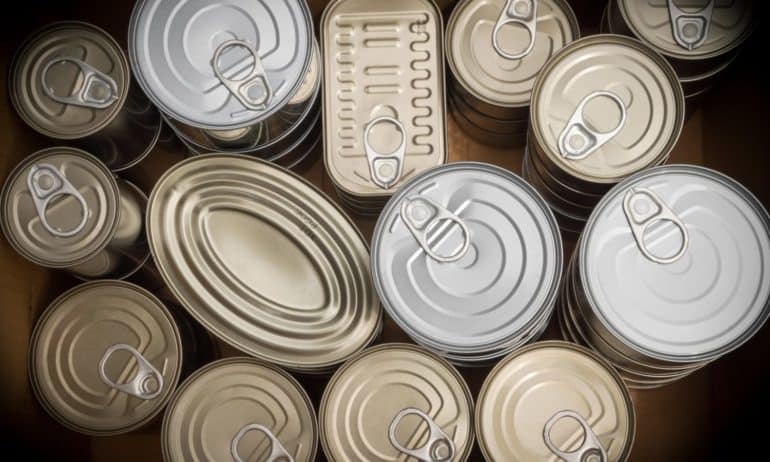In mid-February, the Trump Administration proposed to overhaul the Supplemental Nutrition Assistance Program (SNAP) that supports the diets of millions of Americans in favor of the incongruently titled America’s Harvest Box. SNAP provides more than 40 million low-income individuals in the United States with an Electronic Benefit Transfer (EBT) card that is redeemable as cash at thousands of food vendors across the nation, from the corner grocery store to big box stores and farmers’ markets. The Trump Administration’s proposal replaces about half of the cash benefit from the SNAP program with America’s Harvest Box.
Although its title conjures visions of crisp greens, juicy fruit, and glistening vegetables, the proposed Harvest Box includes a predetermined selection of processed, non-perishable, packaged foods from the federal government—think canned and boxed foods.
If the distribution of canned and boxed foods sounds familiar or reminiscent of other outdated and widely critiqued federal nutrition programs, this is because the proposed Harvest Box looks remarkably similar to the Food Distribution Program on Indian Reservations (FDPIR), also known as Commodities. Through Commodities, the U.S. Department of Agriculture (USDA) Food and Nutrition Service provides surplus processed and non-perishable commodity foods to low-income individuals living on or near Indian reservations.
Our team at the Montana State University’s (MSU) Food and Health Lab has conducted research about the nutritional quality of the Commodities program and its effect on diets and health for the past five years. Findings from our work shed light on the expected nutritional limitations of the proposed American’s Harvest Box. Along with collaborators, the MSU Food and Health Lab assessed the nutritional quality of five randomly selected food packages offered by the Commodities program, and research results are published in Public Health Nutrition.
This study assessed the nutrient quality of the five Commodities food packages using the Healthy Eating Index-2010 (HEI-2010), a measure of the relative dietary quality compared to 2010 Dietary Guidelines for Americans. Findings from this study show that the five randomly selected food packages from the Commodities program fall markedly short of meeting the diet quality recommendations set by the Dietary Guidelines for Americans. Specifically, the average total HEI-2010 score for the five Commodities food packages was 66 compared to the maximum HEI-2010 score of 100. To equate this score to grading systems commonly used in American school systems, this score would be a borderline F.
The U.S. Dietary Guidelines recommend fresh fruits and vegetables along with whole grains as key foods for consumption to mitigate diet-related chronic disease and support sustainable diets. Our study shows that participants in the Commodities program have limited access to adequate amounts of fresh fruits and vegetables as well as whole grains. Diets high in processed, energy-dense foods are associated with the high prevalence of obesity and diet-related chronic disease such as diabetes. Diabetes related to diet increasingly burdens communities on reservations along with others across the nation and globally.
Based upon what we have learned about the nutrient quality of Commodity food packages, the Trump Administration’s proposed Harvest Box is unlikely to meet the nutrient needs of SNAP participants. The proposed approach to reducing costs associated with federal food assistance programs by providing SNAP participants with an America’s Harvest Box will likely place increased burdens on American health care systems.
In addition to failing to meet nutritional needs, our research about the Commodities program highlights the lack of food choices provided to participants. The Commodities program offers a limited variety of non-perishable foods that are individually packaged and available from few collection points. Moreover, the individual packaging of each food item presents limitations to achieving environmental and economic sustainability.
Participants enrolled in SNAP and Commodities programs should have access and opportunity to select foods that are nutritious, diverse, culturally appropriate, desirable, and delicious. This is a basic human right. Through supporting healthy foods and food environments that enable food choice, federal food assistance programs can better support healthy communities and more sustainable food systems. The proposed America’s Harvest Box falls well short of such goals.










